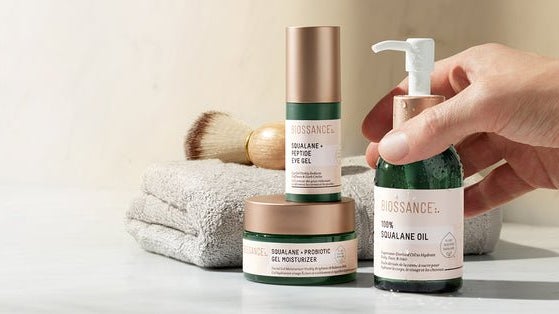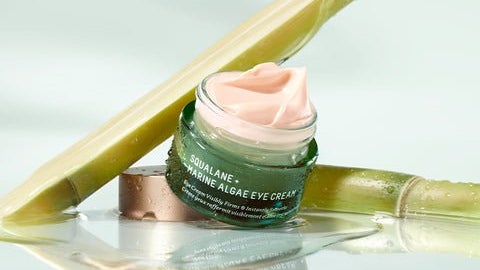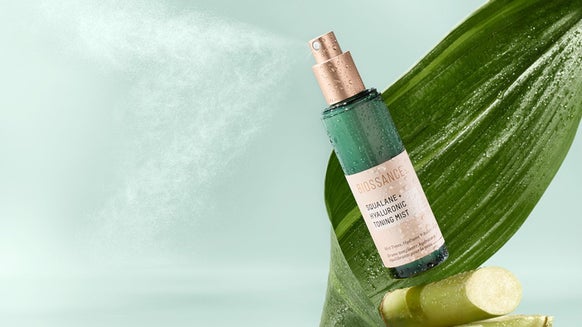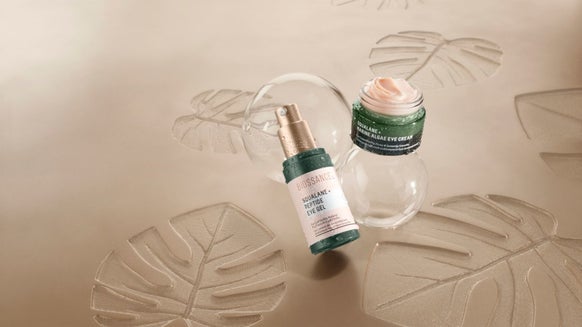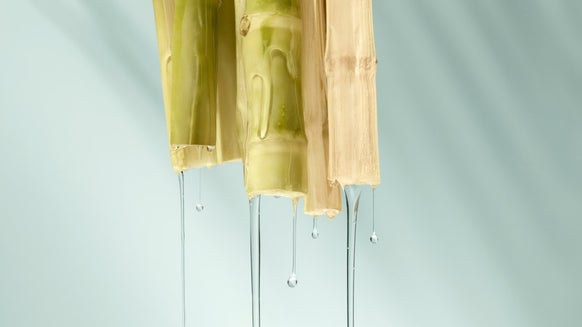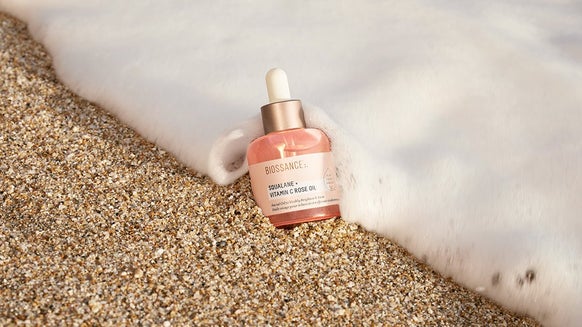5 Ways to Strengthen and Repair Your Moisture Barrier
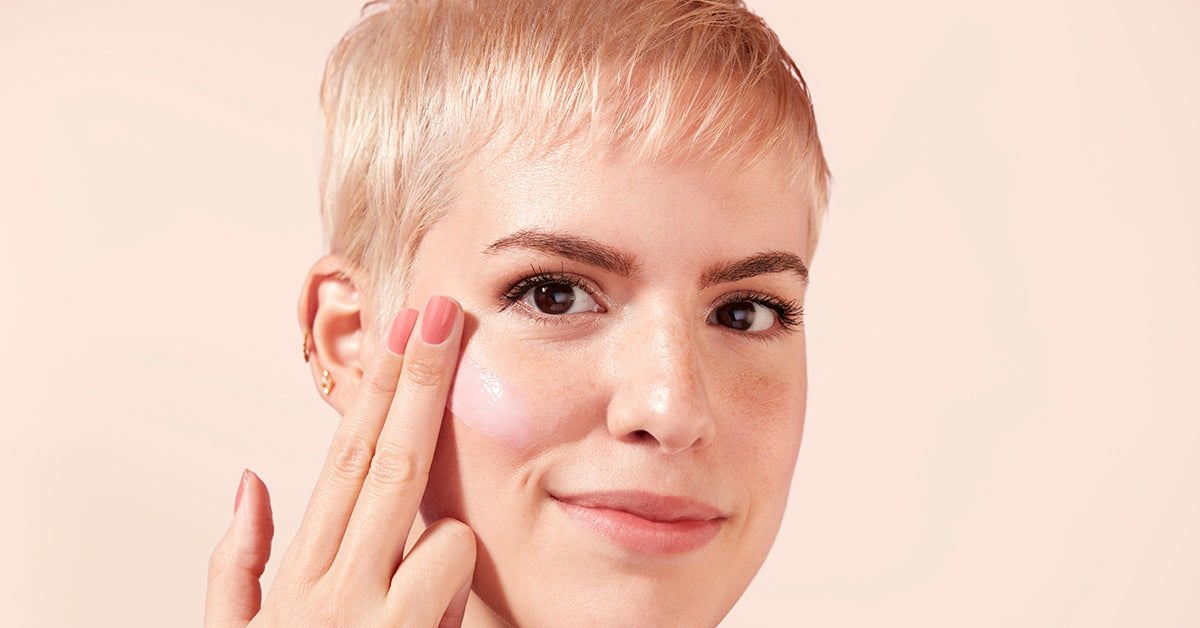
Your skin’s moisture barrier may be only a few microns thick, but it has a big job to do. The moisture barrier provides essential protection against pathogens and environmental stressors while playing a key role in maintaining optimal hydration and overall skin health.
Unfortunately, the modern world isn’t exactly designed to maintain a healthy skin moisture barrier. Exposure to pollutants, harsh skincare products, and UV rays can damage your moisture barrier, causing skin concerns ranging from dehydration to blemishes.
In this post, we’ll explain the science behind the skin barrier, including how to know whether yours is damaged, and how to strengthen it.
What is the Moisture Barrier?
The moisture barrier is made up of a layer of actively shedding skin cells on the outermost part of the epidermis called the stratum corneum. This thin layer of cells seals in moisture while protecting the skin from environmental stressors such as chemical irritants and bacteria.
The uppermost layer of the stratum corneum is made up of loose skin cells that have been sacrificed to shield the underlying layers. Underneath lies another layer of cells that are larger and more rigid. These two layers of cells are held together intracellular lipids which serve as a moisture-rich glue, binding the two layers of cells together to maintain the moisture barrier’s integrity.
These lipids also mix with sebum on the skin’s surface to form skin surface lipids (SSL).
What Does the Moisture Barrier Do?
Intracellular and skin surface lipids pull moisture from the air to keep skin hydrated while preventing trans transepidermal water loss (TEWL).
Trans epidermal water loss (TEWL) is the scientific process that describes a damaged moisture barrier. When TEWL occurs, moisture escapes, causing the skin to become dry and irritated.
How Can You Tell if Your Moisture Barrier is Damaged?
Signs of a damaged moisture barrier include:
- Reddened, irritated skin
- Flaky, dehydrated skin
- Sensitized, reactive skin
- Stinging
- Dryness
- Breakouts and uneven skin texture
5 Ways to Repair Your Moisture Barrier
Hydrate, Hydrate, Hydrate
Boosting skin hydration infuses cells with water, plumping them up and helping heal cracks in the skin’s moisture barrier. Double down on hydration by drinking plenty of water and using skincare products rich in hyaluronic acid, such as our Copper Peptide Rapid Plumping Serum.
Hyaluronic acid is a moisture magnet that’s naturally found in your skin’s moisture barrier. It works by pulling water from the environment and trapping it within the skin, leaving your skin plump, hydrated and nourished.
Our Copper Peptide Rapid Plumping Serum combines the hydrating abilities of hyaluronic acid with the protective power of ectoin to deeply hydrate and support a healthy moisture barrier while instantly plumping skin.
Pro tip: apply products containing hyaluronic acid to clean, damp skin. They’ll pull those water molecules into your moisture barrier, maximizing their hydrating, plumping power.
Feed Your Microbiome
Your skin’s microbiome is made up of trillions of beneficial microscopic organisms scattered throughout the uppermost layers of skin cells. A key part of your immune system, this tiny army defends against pathogens, helps maintain a balanced skin pH, and produces beneficial lipids which strengthen your moisture barrier.
A diverse, thriving microbiome is essential to a healthy moisture barrier. Give your microbiome some extra TLC with our advanced, reformulated Probiotic Gel Moisturizer. Our scientists used sustainable, cutting-edge technology to encapsulate live probiotics within a shelf-stable formula. These tiny capsules burst when our formula hits your skin, flooding it with beneficial bacteria to help your skin microbiome — and your moisture barrier — recover and thrive.
Choose a Ceramide-Rich Moisturizer
Ceramides are a crucial component of your top layer of skin, helping strengthen the skin’s moisture barrier and repair existing damage.
Our Omega Repair Cream contains ceramides as well as plumping, hydrating omega fatty acids similar to what’s in your skin’s moisture barrier work to hydrate and restore your skin’s protective layer while hyaluronic acid deeply hydrates and plumps.
Maintain the Right pH Balance
Your skin’s surface is naturally acidic, which is one of the reasons why the moisture barrier is sometimes referred to as the “acid mantle.” This slight acidity helps maintain your skin’s microbiome and support overall skin health.
Cleansers and even tap water can alter your skin’s natural acidity, which is one reason why toner is an essential step in any skincare routine. Toners — such as our BHA Pore-Minimizing Toner and our Hyaluronic Facial Mist — balance the skin, returning it to its naturally acidic pH and preparing it to receive hydration.
Don’t Overuse Exfoliating Ingredients
When used improperly, skincare ingredients that increase cell turnover — such as alphy hydroxy acids and retinoids — can strip that first layer of loose skin cells, compromising the moisture barrier and causing transepidermal water loss.
Our Retinol Night Serum and 10% Lactic Acid Resurfacing Serum are both formulated to be gentle on your skin’s moisture barrier, so long as you use them separately. You can get the skin-smoothing, dark-spot-busting benefits of both by alternating between the two or using a skin cycling routine.

As a lifestyle writer and journalist, I love sharing my passion for ocean conservation and obsession with clean beauty. I’ve tried almost every trend and ingredient, and Biossance’s science-backed formulas are the only ones that consistently calm my reactive skin and make it smoother, clearer, and healthier. I’m so excited to be on this journey of skincare innovation with Biossance, and to share it with you!

